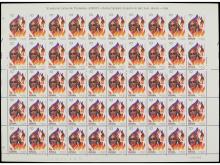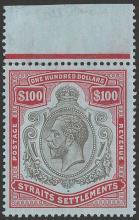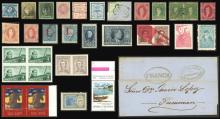Red Cross and Red Crescent
Published

The Red Cross and Red Crescent, both symbols used in voluntary health work and humanitarian initiatives, are also highly sought-after subjects for stamps. Stamp collectors and enthusiasts are now starting to appreciate the value and the history that comes with these symbols. It was during the First World War that these symbols were used on mails, primarily for fundraising activities. And since these were for humanitarian purposes, the stamps were accepted and gained traction among the general public.
The story of the Red Cross and stamps can be traced to Jean-Henry Dunant when he decided to organize Red Cross as a way to address the suffering after the Battle of Solferino (1859). The colors that have become iconic through the years were produced when uniform fabric and blood were mixed. And after more than a decade, the Greek 40L Hermes Head stamps were made in the same color, and this became one of Europe’s great stamps to collect.
The popularity of these stamps and the symbols can be attributed to the support from the philately community. As a way to support the humanitarian initiatives, these stamps were used and delivered to different parts of the world. Nations around the world have shared their support by printing the same stamps to show support. Additional surcharges were charged, and the proceeds directly went to the ICRC. And thanks to these proceeds, the organization has reported £2.5 billion-a year in revenues, supported by 12,500-strong staff.
Diverse set of Red Cross-themed stamps now available
The collection of Red Cross-themed stamps is diverse, and the number and diversity can only be rivalled by Scouting issuances. One popular issue was the ‘Window and Orphan’, released by France in 1914 and the ‘Bombed Hospital and Sinking of the Charles Rous Hospital Ship’ issuances. Other countries also issued their own commemoratives, including Australia’s commemoratives (1953) and Chile’s ‘Lamp of Life’ (1944). When it comes to Red Cross issuances, a popular item was the GB 1963 stamp issued to commemorate the centennial of ICRC. Nearly 170 million stamps were issued, but these featured one glaring error- the Red Cross is missing.
With these issuances, collectors and enthusiast are given different opportunities. For example, collectors can specialize in Red Cross and Red Crescent stamps, and source these from different parts of the world. For others, they can focus on correspondences and covers during First World War. Whatever the focus, the ICRC and the philately centred on humanitarian initiatives are rich in stamps that can satisfy the needs and requirements of different types of collectors. All these are now possible, thanks to the initiatives of Monsieur Jean-Henry Dunant who saw the need for an independent and humanitarian organization that will take care of the sick and wounded due to wars.








